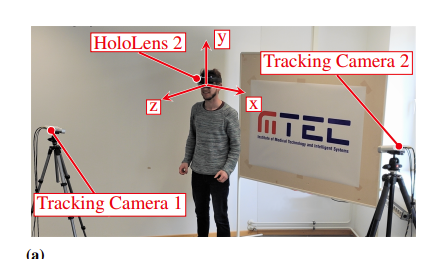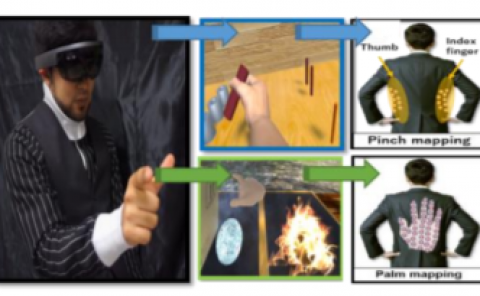VR-based body tracking to stimulate musculoskeletal training
PubDate: Aug 2023
Teams: Hamburg University of Technology
Writers: M. Neidhardt, S. Gerlach F. N. Schmidt, I. A. K. Fiedler, S. Grube, B. Busse, A. Schlaefer
PDF: VR-based body tracking to stimulate musculoskeletal training

Abstract
Training helps to maintain and improve sufficient muscle function, body control, and body coordination. These are important to reduce the risk of fracture incidents caused by falls, especially for the elderly or people recovering from injury. Virtual reality training can offer a cost-effective and individualized training experience. We present an application for the HoloLens 2 to enable musculoskeletal training for elderly and impaired persons to allow for autonomous training and automatic progress evaluation. We designed a virtual downhill skiing scenario that is controlled by body movement to stimulate balance and body control. By adapting the parameters of the ski slope, we can tailor the intensity of the training to individual users. In this work, we evaluate whether the movement data of the HoloLens 2 alone is sufficient to control and predict body movement and joint angles during musculoskeletal training. We record the movements of 10 healthy volunteers with external tracking cameras and track a set of body and joint angles of the participant during training. We estimate correlation coefficients and systematically analyze whether whole body movement can be derived from the movement data of the HoloLens 2. No participant reports movement sickness effects and all were able to quickly interact and control their movement during skiing. Our results show a high correlation between HoloLens 2 movement data and the external tracking of the upper body movement and joint angles of the lower limbs.

